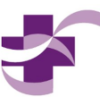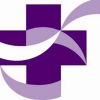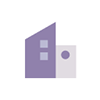Description
Before applying for this role, please read the following information about this opportunity found below.
Summary :
The competent Nurse, in the Critical Care and similar clinical setting ,
practices independently and demonstrates an awareness of all relevant aspects
of a situation. Provides routine and complex care, in accordance with patient
treatment plans. Continues to develop the ability to cope with and manage
contingencies of clinical nursing. Makes appropriate assignments and delegates
to other care providers as a means to help manage the clinical situation.
Responsibilities :
Meets expectations of the applicable OneCHRISTUS Competencies : Leader of
Self, Leader of Others, or Leader of Leaders.
- Meets expectations for flexibility of assignment within the ministry.
- Proactively provide assignment availability on a regular basis.
- Able to be assigned to more than one unit.
- Consistent with the ANA Scope and Standards of Practice, provides nursing
care utilizing the nursing process, including assessment, diagnosis, planning,
intervention and evaluation for assigned patients.
Addresses increasingly complex psychological, emotional, cultural, and
social needs of patient and families in accordance with their level of
practice.
Using the appropriate protocol, administers medications and treatments;
monitors for side-effects and effectiveness of the treatment prescribed.
- Documents patient history, symptoms, medication, and care given.
- Assess learning needs and provides education to patients, family members
andor care givers; identify issues and resources.
CORE COMPETENCIES
Standard I : Utilizes the Nursing Process
Uses critical thinking skills to assess the basic physical, psychosocial,
social, cultural, spiritual, and development needs of patient and families.
- Communicates findings to appropriate healthcare team members.
- Develops and uses a specific plan of care and modifies it to meet individual
patient needs using evidence-based practice.
Implements patient care and therapeutic procedures; monitors and documents
progression of treatment and teaching goals.
Evaluates the care and treatment(s) provided to the patient and the patient
response to the care and treatment(s).
- Performs timely reassessment and documentation.
- Must be able to perform unit-specific competencies based on the specific
patient care need for the designated units patient population.
Standard II. Patient Throughput & Patient Flow Process
Anticipates and plans for admissiondischargetransfer needs to facilitate
patient flow.
Utilizes appropriate systems of communication and tools to facilitate the
discharge process.
Coaches on tools and techniques for checking, cross checking and validating
orders to ensure accuracy.
Standard III. Unit Operations
Plans, directs, and evaluates the overall nursing care and functions in a
particular nursing unit during an assigned shift.
Demonstrates good stewardship in proper use and maintenance of equipment and
Supplies.
Assesses departmental staffing needs; actively participates in resourcing
efforts.
Educates and trains others on the operations, ethics, and regulations within
the industry.
Standard IV. Safe PracticeQuality CareRegulations
Incorporates patient safety practicesguidelines to promote a safe
environment resulting in positive patient outcomes.
Demonstrates accountability for nursing research and quality improvement
activities.
- Provides evidence-based nursing care.
- Communicates patient information effectively across the continuum of care.
- Educates and trains others on the operations, ethics, and regulations within
the industry.
Knowledge of federal, state and local healthcare-related laws and
regulations; ability to comply with these in healthcare practices and
activities.
TECHNICAL COMPETENCIES
Clinical Policies and Standards
- Follows a specific set of standards and associated clinical procedures
- Analyzes policy and standards documentation and ensures organizational
compliance..
- Provides feedback for improvement of procedures.
- Assists in the development and implementation of specific procedures.
- Works with control and monitoring mechanisms, tools and techniques.
Health Information Documentation
Shares experiences with maintaining paper and electronic patient
documentation.
Walk through the steps and procedures for receiving, validating and updating
patient records.
- Describes the flow of information between various stations or units.
- Discusses the functions, features and document flow of electronic
documentation.
- Transcribes verbal orders; explains techniques for ensuring their accuracy.
- Explains health information documentation best practices and their rationale
across health care practices.
Medical Equipment
Describes experience with basic medical equipment used in own unit or
facility.
Uses standard diagnostic tools and techniques to resolves common equipment
problems.
- Educates patients about the appropriate use of home medical equipment.
- Ensures that all equipment and related supplies are in proper working order
prior to use to ensure patient safety.
Inspects, troubleshoots and evaluates incoming equipment.
Medical Order Processing
Shares experiences with processing medical orders for one or more groups of
patients or conditions.
Describes functions and features of the system used to enter, validate,
update and forward medical orders.
- Discusses common errors, their sources and procedures for correcting.
- Explains considerations for entering and following standing orders.
- Differentiates between standing orders and preprinted orders and
considerations for each.
Patient Chart Reading and Interpretation
Describes experiences in reading and interpreting patient charts for
patients on unit and under own care.
Reviews patients’ charts for completion and accuracy; identifies and alerts
to mistakes or omissions.
- Recognizes unexpected readings and alerts nursing or medical staff.
- Relates examples of mis-readings or misinterpretations and lessons learned.
- Reviews, discusses and validates own interpretation with others.
Patient Safety
Shares experiences with ensuring safety for one or more patient groups or
settings.
Explains key features of safety guidelines and procedures for those groups
and settings.
- Listens and responds to safety inquiries from patients and family members.
- Recognizes and addresses physiological and psychological signs of problems.
- Describes considerations for patients who can cause to harm to self, versus
harm to others.
Utilizes appropriate systems to document misses and near misses,
participates in immediate investigating, analysis and reporting in real-time.
Requirements : EducationSkills
EducationSkills
Bachelor of Science Degree in Nursing, preferred.
Experience
- Minimum of 2 years of combined experience required in both the Critical Care setting and one other specialty (e. g. Medsurg, Telemetry, IMC or Emergency).
- 5 years of experience preferred.
Licenses, Registrations, or Certifications
- BLS required.
- ACLS required.
- RN License in state of employment or compact required.
Work Schedule : Work Type :
Work Type : Full Time
Full Time
EEO is the law - click below for more information :
We endeavor to make this site accessible to any and all users. If you would
like to contact us regarding the accessibility of our website or need
assistance completing the application process, please contact us at (844)
257-6925.







